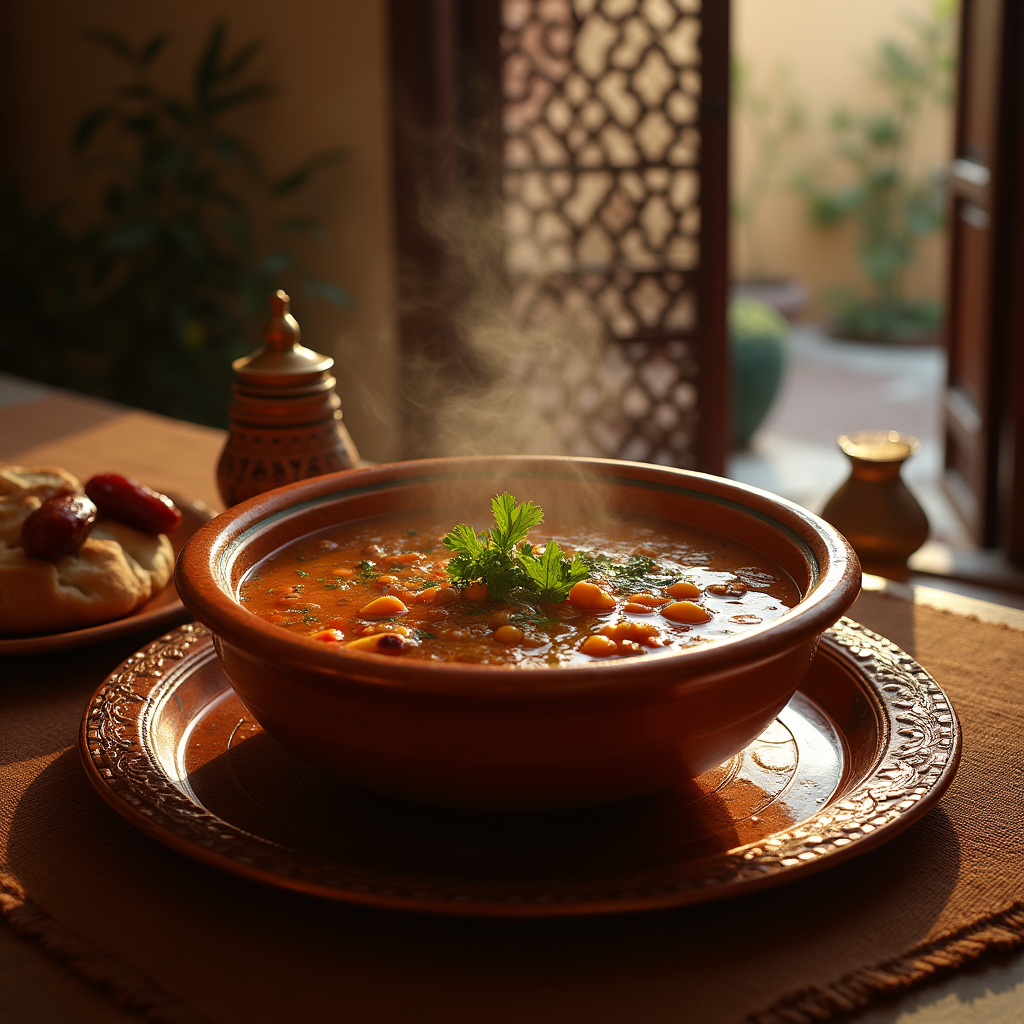
Harira holds a special place in Moroccan culture, particularly during Ramadan when it traditionally breaks the daily fast. The name comes from the Arabic word “harir” meaning silk, referring to its smooth, elegant texture achieved through the perfect balance of ingredients and patient cooking.
| Ingredient | Amount |
|---|---|
| Lamb or Beef | 4 oz |
| Lentils | 1/4 cup |
| Chickpeas | 1/4 cup |
| Fresh Herbs | 2 tbsp |
| Spice Blend | 1 tbsp |
| Ingredient | Amount |
|---|---|
| Lamb or Beef | 8 oz |
| Lentils | 1/2 cup |
| Chickpeas | 1/2 cup |
| Fresh Herbs | 4 tbsp |
| Spice Blend | 2 tbsp |
| Ingredient | Amount |
|---|---|
| Lamb or Beef | 1 lb |
| Lentils | 1 cup |
| Chickpeas | 1 cup |
| Fresh Herbs | 8 tbsp |
| Spice Blend | 4 tbsp |
Understanding Harira’s cultural significance helps appreciate the care needed in its preparation. This soup represents more than sustenance; it’s a symbol of community, family, and tradition, especially during Ramadan when it provides comfort and nourishment after a day of fasting.
| Nutrient | Amount |
|---|---|
| Calories | 385 |
| Protein | 26g |
| Carbohydrates | 45g |
| Fiber | 12g |
| Fat | 14g |
Yes! Like many soups, Harira often tastes better the next day as flavors develop further.
While traditionally made with lamb or beef, vegetarian versions are also common and delicious.
The key lies in the final thickening step using flour and careful stirring to create that signature silky consistency.
Traditionally, it’s served with dates and chebakia (honey cookies) during Ramadan, but crusty bread works well too.
Share your Harira creations using #AuthenticHarira – and remember, patience and attention to detail are key to achieving that perfect silky texture! 🇲🇦✨